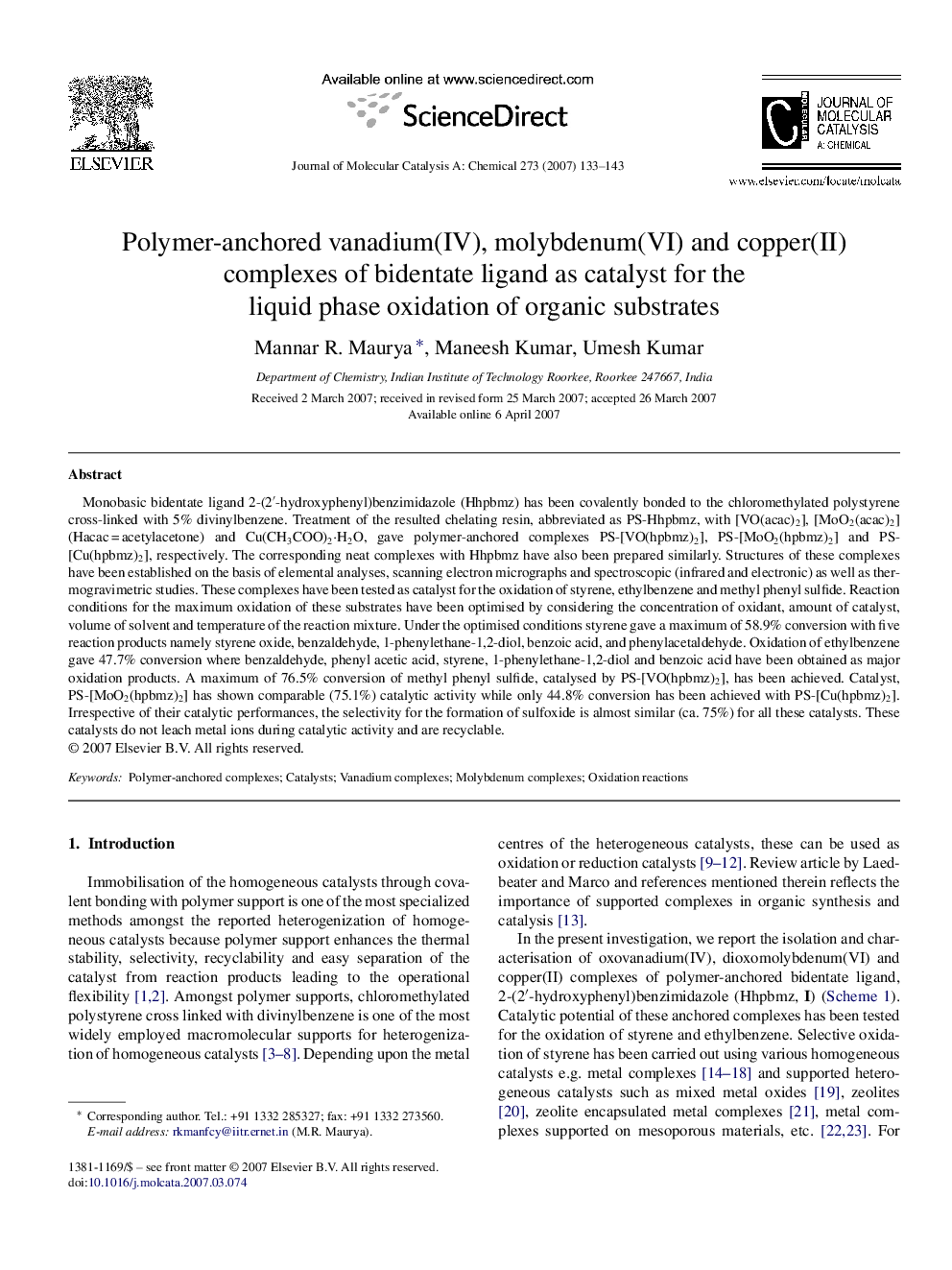| کد مقاله | کد نشریه | سال انتشار | مقاله انگلیسی | نسخه تمام متن |
|---|---|---|---|---|
| 67884 | 48497 | 2007 | 11 صفحه PDF | دانلود رایگان |

Monobasic bidentate ligand 2-(2′-hydroxyphenyl)benzimidazole (Hhpbmz) has been covalently bonded to the chloromethylated polystyrene cross-linked with 5% divinylbenzene. Treatment of the resulted chelating resin, abbreviated as PS-Hhpbmz, with [VO(acac)2], [MoO2(acac)2] (Hacac = acetylacetone) and Cu(CH3COO)2·H2O, gave polymer-anchored complexes PS-[VO(hpbmz)2], PS-[MoO2(hpbmz)2] and PS-[Cu(hpbmz)2], respectively. The corresponding neat complexes with Hhpbmz have also been prepared similarly. Structures of these complexes have been established on the basis of elemental analyses, scanning electron micrographs and spectroscopic (infrared and electronic) as well as thermogravimetric studies. These complexes have been tested as catalyst for the oxidation of styrene, ethylbenzene and methyl phenyl sulfide. Reaction conditions for the maximum oxidation of these substrates have been optimised by considering the concentration of oxidant, amount of catalyst, volume of solvent and temperature of the reaction mixture. Under the optimised conditions styrene gave a maximum of 58.9% conversion with five reaction products namely styrene oxide, benzaldehyde, 1-phenylethane-1,2-diol, benzoic acid, and phenylacetaldehyde. Oxidation of ethylbenzene gave 47.7% conversion where benzaldehyde, phenyl acetic acid, styrene, 1-phenylethane-1,2-diol and benzoic acid have been obtained as major oxidation products. A maximum of 76.5% conversion of methyl phenyl sulfide, catalysed by PS-[VO(hpbmz)2], has been achieved. Catalyst, PS-[MoO2(hpbmz)2] has shown comparable (75.1%) catalytic activity while only 44.8% conversion has been achieved with PS-[Cu(hpbmz)2]. Irrespective of their catalytic performances, the selectivity for the formation of sulfoxide is almost similar (ca. 75%) for all these catalysts. These catalysts do not leach metal ions during catalytic activity and are recyclable.
Polymer-anchored catalysts PS-[VO(hpbmz)2], PS-[MoO2(hpbmz)2] and PS-[Cu(hpbmz)2] (where Hhpbmz = 2-(2′-hydroxyphenyl)benzimidazole) have been prepared and characterised. These complexes catalyse the oxidation of styrene, ethylbenzene and methyl phenyl sulfide efficiently. Figure optionsDownload as PowerPoint slide
Journal: Journal of Molecular Catalysis A: Chemical - Volume 273, Issues 1–2, 1 August 2007, Pages 133–143